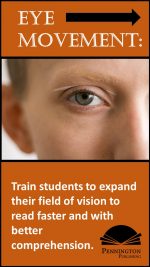Silent Reading Fluency
A bad habit is hard to break, especially when it’s a bad reading habit. However, replacing bad reading habits with good ones can significantly improve silent reading fluency. In other words, you’ll read faster and with better understanding. Check out these four tips to build comprehension.
- Improve your reading posture. Your body position affects how well you understand what you read. For good reading posture, sit up straight in a straight-backed chair at a desk or table with good lighting and keep your feet flat on the floor. Place two hands on the reading. Keep the distance from eyes to book about the same distance as that of your forearm. Don’t angle the book too much so that you can keep your head straight.
- Improve your concentration. When reading at home, put away your phone, get away from the television and computer, and find a quiet room. Anything competing with full concentration reduces reading reading comprehension. Good reading cannot include multi-tasking. Stop taking mental vacations during your reading. For example, never allow yourself a pause at the end of a page or chapter–read on!
- When reading silently, don’t pronounce the words quietly or in your head, and don’t move your lips. These sub-vocalizations interfere with your understanding of the text. Focus on the meaning of the text, not on saying and hearing the words. Some students find that clenching their teeth or reading with a clean pencil in their mouths helps break the lip movement habit.
- Establish a rhythm in your silent reading. The reading pace should be hurried, but at a consistent pace. To pace your reading, place your left hand on the left page and the right hand on the right page. Put three fingers together and place your hand under the first line on the page. If right-handed, place your index finger under the first letter of the line. If you are left-handed, place your ring finger under the first letter of the line. Now, slide your hand underneath the first line at a comfortable, but hurried pace while reading the words on the line. When the index (or ring) finger reaches the last letter of the first line, quickly slide the hand back to the first letter of the line and drop down to the second line. Continue to read in the same manner, but slow down your pace when you sense that your comprehension has decreased because of difficult text.
Using the pacing hand prevents re-reading, skipping lines, and daydreaming. Shortening the stroke of the hand across the page, after practice, will also help expand your peripheral vision across the page. This is important because reading research tells us that good readers have fewer eye fixations per line. When the eyes move from fixation to fixation, there is little reading comprehension. So, focus on the center of the page and use your peripheral vision to view words to the left and right as you are reading.
FREE DOWNLOAD TO ASSESS THE QUALITY OF PENNINGTON PUBLISHING RESOURCES: The SCRIP (Summarize, Connect, Re-think, Interpret, and Predict) Comprehension Strategies includes class posters, five lessons to introduce the strategies, and the SCRIP Comprehension Bookmarks.
Get the SCRIP Comprehension Strategies FREE Resource: ![]()

The Science of Reading Intervention Program
The Science of Reading Intervention Program: Word Recognition includes explicit, scripted instruction and practice with the 5 Daily Google Slide Activities every reading intervention student needs: 1. Phonemic Awareness and Morphology 2. Blending, Segmenting, and Spelling 3. Sounds and Spellings (including handwriting) 4. Heart Words Practice 5. Sam and Friends Phonics Books (decodables). Plus, digital and printable sound wall cards and speech articulation songs. Print versions are available for all activities. First Half of the Year Program (55 minutes-per-day, 18 weeks)
The Science of Reading Intervention Program: Language Comprehension resources are designed for students who have completed the word recognition program or have demonstrated basic mastery of the alphabetic code and can read with some degree of fluency. The program features the 5 Weekly Language Comprehension Activities: 1. Background Knowledge Mentor Texts 2. Academic Language, Greek and Latin Morphology, Figures of Speech, Connotations, Multiple Meaning Words 3. Syntax in Reading 4. Reading Comprehension Strategies 5. Literacy Knowledge (Narrative and Expository). Second Half of the Year Program (30 minutes-per-day, 18 weeks)
The Science of Reading Intervention Program: Assessment-based Instruction provides diagnostically-based “second chance” instructional resources. The program includes 13 comprehensive assessments and matching instructional resources to fill in the yet-to-be-mastered gaps in phonemic awareness, alphabetic awareness, phonics, fluency (with YouTube modeled readings), Heart Words and Phonics Games, spelling patterns, grammar, usage, and mechanics, syllabication and morphology, executive function shills. Second Half of the Year Program (25 minutes-per-day, 18 weeks)
The Science of Reading Intervention Program BUNDLE includes all 3 program components for the comprehensive, state-of-the-art (and science) grades 4-adult full-year program. Scripted, easy-to-teach, no prep, no need for time-consuming (albeit valuable) LETRS training or O-G certification… Learn as you teach and get results NOW for your students. Print to speech with plenty of speech to print instructional components.


